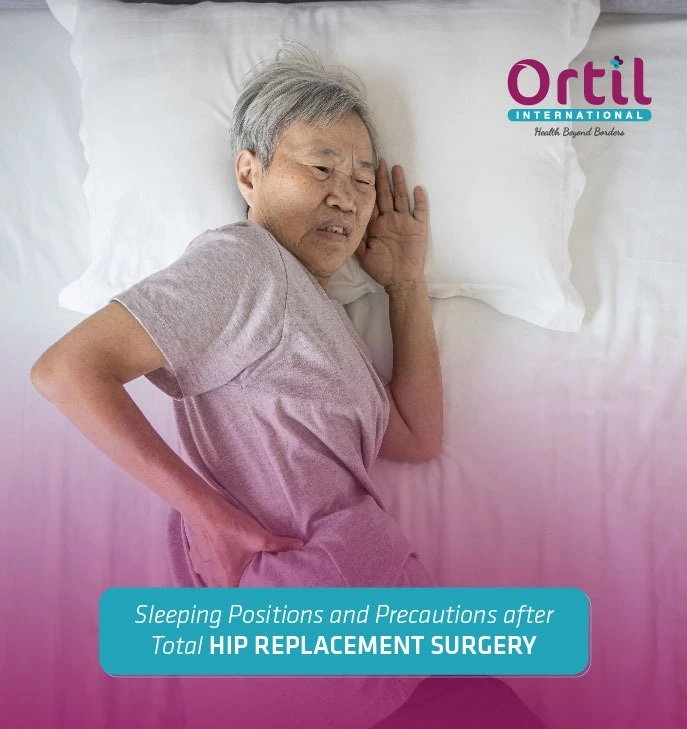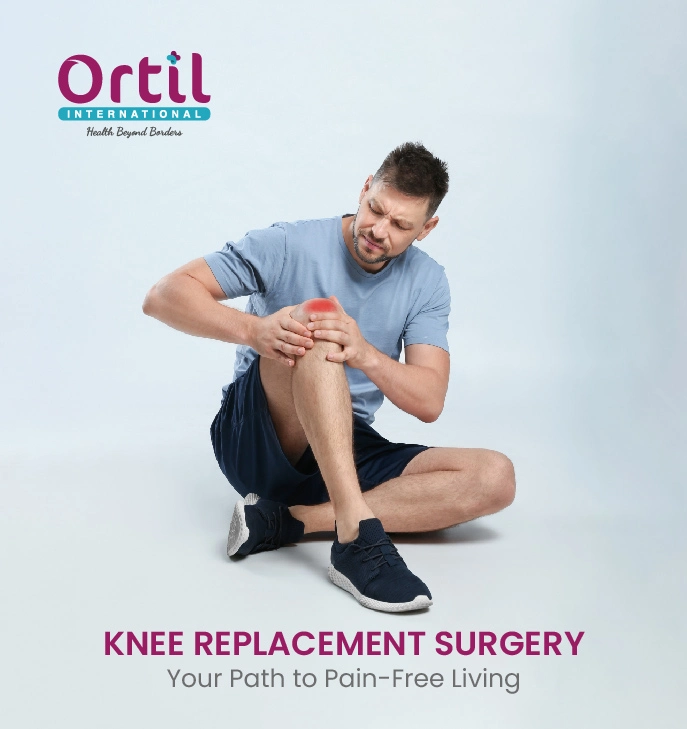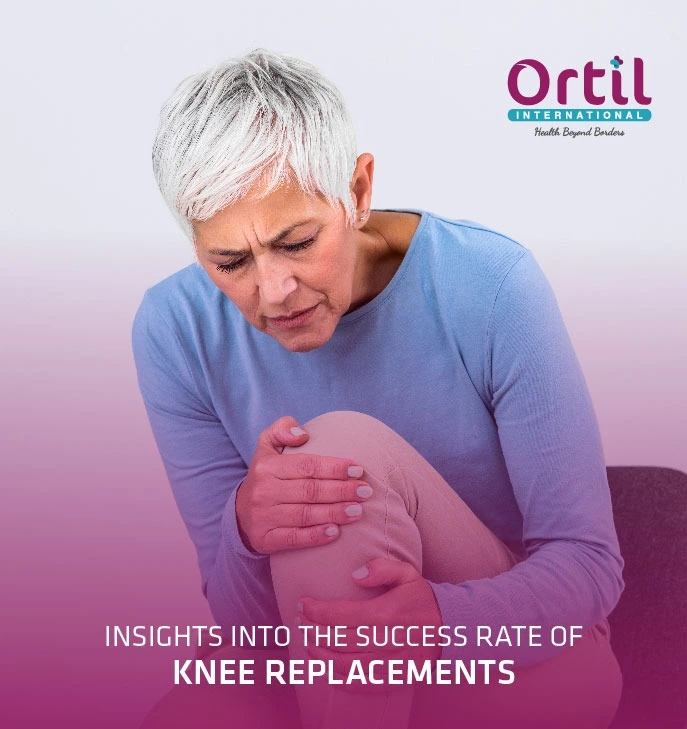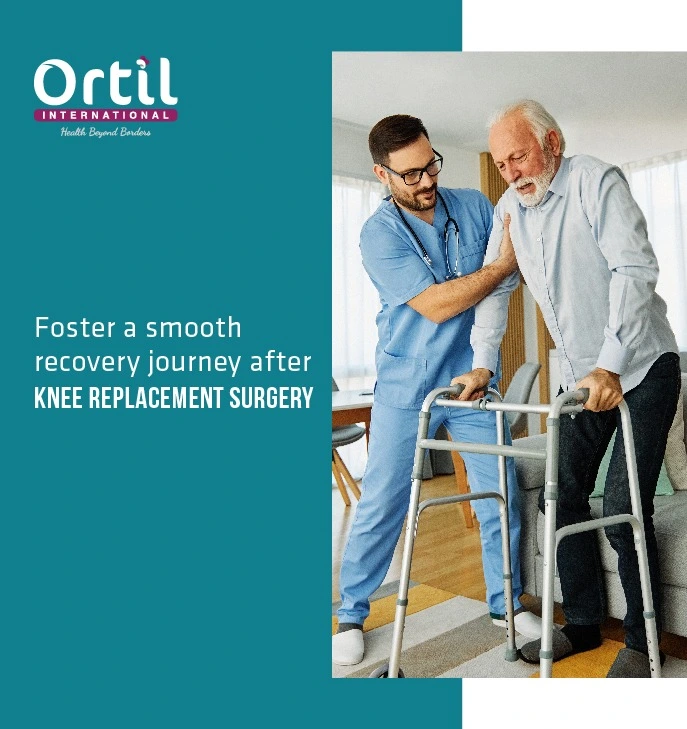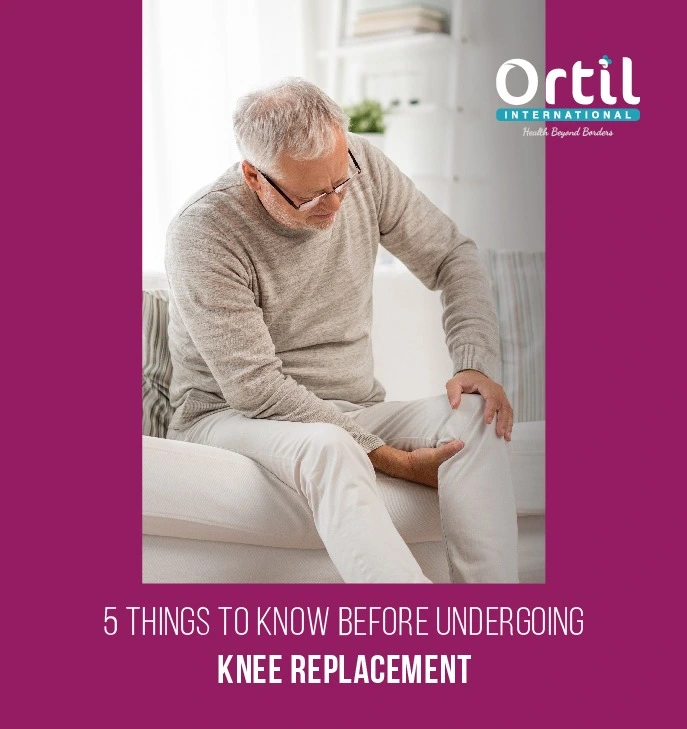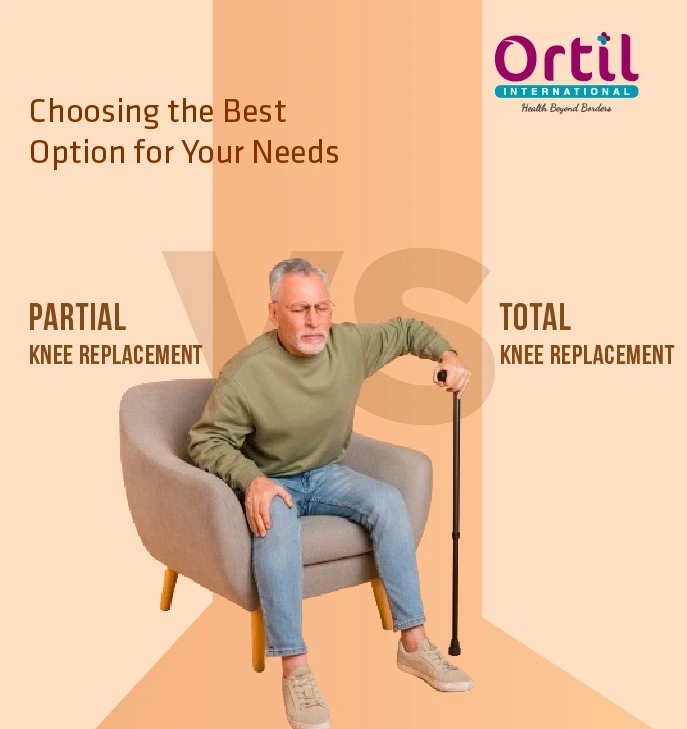How to Sleep after Hip Replacement Surgery?
Pain is a common complication that occurs after hip replacement surgery. The pain symptom can be the reason for your restless nights due to an impaired sleep cycle. Sleeping positions after hip replacement can be helpful to improve sleep and recovery. Sleeping is necessary for proper healing after a hip replacement procedure, but you may become disturbed and irritated when it is impaired.

It is a common question about how to sleep after hip replacement. There are also some precautions during sleep after hip replacement that you should be aware of, and you should always sleep in good positions to avoid dislocation of the new joints. Let’s discuss about sleep so that you can better understand:
How Do You Sleep in Spine Position after Hip Replacement?
You can sleep on your back after hip replacement surgery, which is considered one of the best positions to avoid dislocations of the new hip joint. The important points about sleeping on your back are described below:
- Place a pillow between your legs while sleeping on your back
- Do not cross your legs or place one foot on another while sleeping on your back
- Choose a solid mattress or bed to sleep in, and avoid using very soft mattresses.
- While you are sleeping on your back, do not place the pillow or rolled towel under your knees.
- You should prevent your foot's rotational or twisting motion on the inside.
You can also improve your sleep while avoiding overbending and twisting, as these movements can cause pain and disturb your sleep. You should also take pain medications prescribed by your doctor so that it can further improve your sleep and recovery.
How Do You Sleep in Side-Lying after Hip Replacement?
In side-lying, it is better for you to avoid sleeping on the affected side or where the new hip joint is replaced. Doctors usually ask you not to sleep on this side for 4 to 6 weeks, but it depends on your recovery. The best way to sleep after hip replacement and essential points about sleeping on the side are described below:
- Sleep on the non-affected side for a month to avoid any complications.
- Always place a pillow between your knees.
- While sleeping on the non-affected side, use a pillow at the level of the foot to avoid any rotational or twisting motion.
- Avoid using soft mattresses.
- Avoid placing your upper leg in front of your body.
- Change position to sleep on your back, but do not sleep on the affected side in the initial recovery period.
Different Positions for Sleeping after Hip Replacement
The essential aspects of sleeping positions after hip replacement are:
- In the initial recovery phase, sleeping on your back or your unaffected side is better.
- You can start sleeping on your affected side if your doctor tells you to do so.
- Sleeping on the affected side also depends on your recovery, and if you feel confident about yourself, you can start sleeping on your affected side.
- In the late phase of recovery, you can start sleeping in other positions with the guidance of your healthcare provider.
What Positions you Should Avoid After Hip Replacement?
There are some precautions after hip replacement. By taking these precautions seriously, you can also speed up your recovery and minimize the chances of any risk and complication associated with hip replacement. If you have undergone a hip replacement, you must be concerned about the best sleeping position after hip replacement, so let’s discuss that.
- Avoid the following sleeping positions after hip replacement:
- Avoid twisting your feet and keep them naturally pointed towards the ceiling.
- Avoid outward twisting or crossing your ankles.
- Sleep on the non-operative hip with two pillows between the legs to prevent the top leg from crossing over.
- Do not sleep in prone position, as it is challenging to prevent hip twisting.
- Avoid drawing your knee more than a natural 90-degree angle.
- Avoid reaching to pull up covers while lying down.
- Prioritize sleep for natural healing and overall well-being.
- Quality sleep reduces stress and anxiety, and it provides energy for rehabilitation.
Following these precautions helps in successful recovery and prevents complications after hip replacement surgery.
How Can you Over-Turn in Bed After Hip Replacement
Over-turning is part of the daily activities. Changing sides while lying down is essential to avoid pressure sores. Some techniques are used to turn over in bed after hip replacements. One of the methods is the log-roll method, which is described below:
- Always roll over on your non-operated side.
- You can also turn over to the operated side after 4-6 weeks.
- Shift yourself on the edge of the bed on the operated side.
- Bend your upper body but not from the waist.
- Place two pillows between your legs and lie down on your back.
- Now bend down both your knees while keeping pillows in between.
- Grab the edge of the bed from the non-operated side.
- Turn your legs and upper body at the same time on the side of rolling, which is your non-operated side.
Difficulty Sleeping After Hip Replacement Surgery
Most of the patient complain about pain after hip replacement surgery. Pain is the primary cause of the disturbance of sleep, and more than half patients after hip replacement wake up at night due to pain. Many factors can be the cause of trouble sleeping which may include medications or pain due to limited motion. Some of the important aspects used to manage pain are as follows:
- Sleep is vital for recovery, and it requires proper management of pain.
- Pain management protocols involve many methods like injections, nerve blocks, narcotics, and medication.
- Try to stick to the pain management plan that is designed by your healthcare team for proper recovery.
- After three weeks of surgery, activity levels increase, and pain medication usage decreases, which can lead to difficulty sleeping.
- Take pain medication before sleeping for easy restoration of the sleep cycle.
- Take short breaks from stress activities because it can significantly impact sleep quality.
- If sleep disturbances persist, contact your surgeon for assistance in managing them during recovery.
How Do You Get Out of Bed after Hip Replacement?
When you are about to get out of bed after hip replacement, follow these steps:
- Clear the bed of all sheets and pillows.
- Bend the leg opposite the hip replacement and use your elbows for support.
- Slide towards the edge of the bed.
- Use your elbows and hands to push yourself up from a semi-lying position.
- Carefully shift your hips and legs to the edge of the bed, then swing your body to sit up.
- Extend the operated leg and rely on your stronger leg for support while standing up.
The Best Sitting Position After Hip Replacement
The guidelines for the best sitting position after hip replacement are described below:
- Avoid prolonged sitting in the same position; change every 30 to 40 minutes.
- Maintain a distance of about 6 inches between your feet and avoid bringing them together.
- Avoid crossing your legs and keep them straight and uncrossed, with feet and knees pointed straight ahead.
- Use a firm chair with a straight back and armrests.
- Avoid soft chairs, rocking chairs, stools, or sofas.
- Ensure that the chair height is adequate and the hips are higher than the knees.
- Use a pillow or cushion if needed.
- When rising from a chair, shift to the edge and utilize the chair arms or assistive devices like a walker or crutches for support. Avoid rocking to stand up.
Conclusion
Sleeping after hip replacement can be difficult, but It is better to follow the guidelines mentioned above because they not only protect the new hip joint but also help in the recovery process. The guidelines mentioned above are helpful for patients after hip replacement and how to sleep after hip surgery. If you are in the post-operative phase, then these guidelines will help you in your recovery period.
FAQ’s of Best Sleeping Position after Hip Replacement Surgery
Why is it So Hard to Sleep for a Patient who have gone through Hip Replacement Procedure?
Pain is a common complaint after hip replacement, and this can also disturb sleep.
Can I Bend my Leg in Bed after the Replacement of Hip?
You can bend your leg after hip replacement, but always keep your hips above your knee level. Avoid bending your hip more than 60 to 90 degrees for 6 to 12 weeks after surgery.
How Much Time is Require to Raise My Leg After Hip Replacement?
You can raise your leg for 15-30 minutes after hip replacement to manage the swelling caused by surgery.
Which Hip Replacement Pillow Should I Use?
To avoid complications, you should use hip replacement pillows at the knee and foot level. A wedge pillow is usually used, but you can also use regular pillows.
How to Use a Wedge Pillow after operation?
When rolling from lying on your back to lying on your side, place a wedge shaped pillow between your legs.










